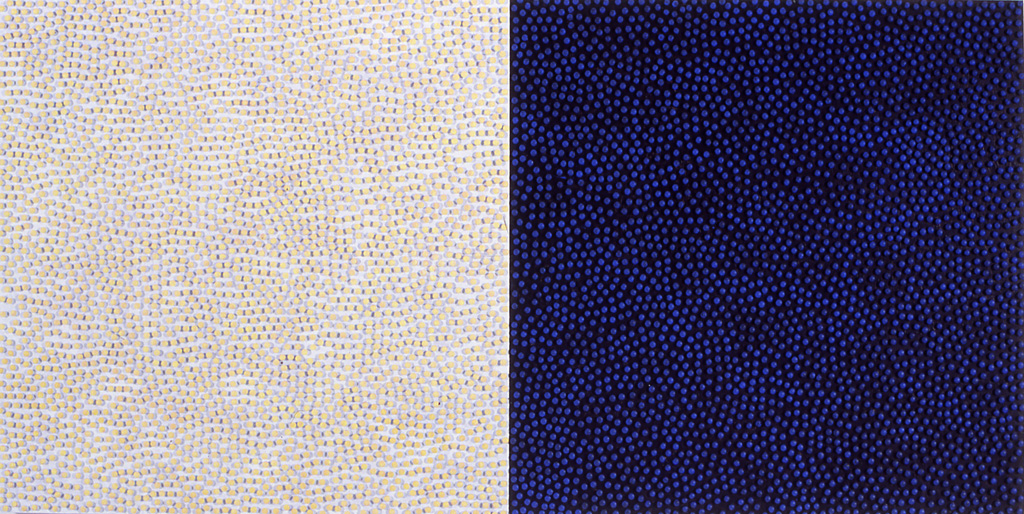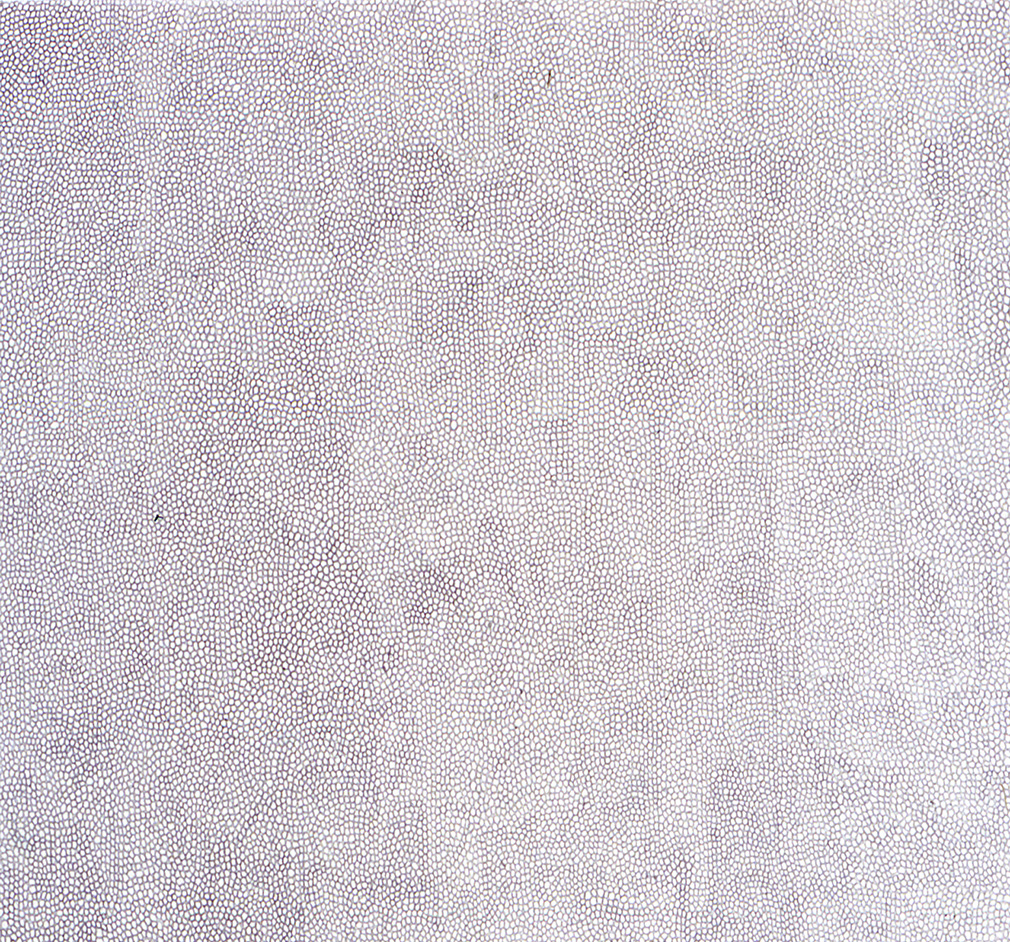PLAIN SONG 2005

Plainsong B/RRB – WY/WB,YB, 2005 acrylic on wood 32” x 64”

Plainsong BW/WY – B/G, 2005 acrylic on wood 32” x 64”

Plainsong BY/Y,R – BW/WB, detail, 2005 acrylic on wood 32” x 64”

Plainsong BY/Y,R – BW/WB, 2005 acrylic on wood 32” x 64”

Plainsong WB/WY,R – B/B, 2005 acrylic on wood 32” x 64”

Plainsong O (fluorescent)/R - BR, 2005 acrylic on wood 32” x 64”

Plainsong WB/WY,R – B/B, 2005 acrylic on wood 32” x 64”
Plainsong R/BG,W – WRB/WB,R , 2005 acrylic on wood 32” x 64”
Plainsong O (fluorescent)/R - BR, 2005 acrylic on wood 32” x 64”

Plainsong WB-WY,R–B-B, 2005 acrylic on wood 32” x 64”

Plainsong R-BG,W–WRB-WB,R, 2005 acrylic on wood 32” x 64”
M My art making is a lot like my life. It’s a spiritual journey and a juggling act. I seek equilibrium — a fine point of balance between the ridiculous and the sublime where everything falls into place and all is both energized and calm.
Y You will see this quest working itself out in cerebral and physical ways in my work. I make radical changes in media from one body of work to the next but my method doesn’t change. There is always a plan that involves order, structure and a controlled paring down to a minimal essence. I think long and hard about formal relationships: shape in relation to surface, the scale of a single unit in relation to the size of the whole, the way in which one colour interacts with another. Since my processes involve so much repetition I think about the question of quantity. How much will be enough? All of this is mental manoeuvering. Once the planning is done the physical work begins. Everything I make involves acts of repetition that can take months. I do the same thing over and over and over again. It is sometimes boring, often exhausting and ultimately meditative. These repetitive processes have evolved as ways of dealing with discipline and guilt. If I don’t work every day I’m out of sorts and self-flagellating. Art that grows by just-do-it increments, work that can be fitted in no matter what the day brings, keeps me centred and content.
I In this exhibition I have taken on the emotive, explosive, sensual power of colour—colour as vibrant as it is out of doors. I felt that this natural force needed to be quieted and contained if equilibrium were to be achieved. Hence each painting appears to be just one colour. There are no compositional elements to activate the eye. Each ground is a stable square. Each square is the same size as the next to give the installation a steady rhythm. The size is large enough that each colour is forceful, but not so large that it overwhelms. Each surface contains the same number of counted out tiny raised wooden domes (2,9l2 per work and well over 40,000 in total).
E Each one colour painting in Plain Song is actually painted of two colours—one colour on the ground and the other on the finely fragmented raised surface. The single colour you see is a neural colour created by the optic nerve combining the ground and surface colours into one hue. Each neural hue oscillates because of the slight variation in depth from ground to surface.
REVIEW
Kathy Dain at Peak Gallery
The fact that Brantford, Ont.-based artist Kathy Dain's new paintings -- exhibited under the title Plain Song -- are made up of hundreds of small, painted, nipple-like bumps of wood arranged in close-packed formation on grounds of a different colour might not fire your imagination. These are exceedingly cunning paintings, however, and a great deal more than the sum of their descriptions.
Dain's little wooden bumps (the artist calls them "domes" and figures there are 2,912 of them per work, or 41,000 for the whole show) are arranged in subtle patterns that are eventually discernible, if you squint your eyes and relax. The domes are painted so that they bear a residual colour fraying out from their ostensible colour. This makes the viewing of Dain's dotted panels a lot more absorbing than it would be otherwise.
Each of her paintings is a diptych -- with coloured panel juxtaposed to colour panel: green and white, red and violet, and so on -- which further complicates what first seem to be dismayingly ingenuous paintings. And, of course, her paintings are enormously labour-intensive. "Everything I make involves acts of repetition that can take months," Dain writes in her gallery statement. "It is sometimes boring, often exhausting, and ultimately meditative," a sequence of states, she says, that keeps her "centred and content." And you can see how it would.
by Gary Michael Dault
Globe And Mail, July 2, 2005



